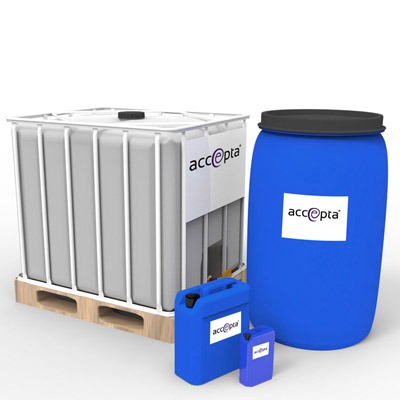Innovative Foam Control Solutions to Improve Your Manufacturing Processes
Innovative Foam Control Solutions to Improve Your Manufacturing Processes
Blog Article
A Comprehensive Overview to Carrying Out Foam Control Solutions in Your Operations
Effective foam control is a crucial aspect of operational performance that typically goes ignored. Recognizing the ins and outs of foam generation can considerably impact both performance and product high quality. By taking a look at key elements such as application compatibility and workers training, organizations can enhance their foam administration initiatives.
Understanding Foam Difficulties
Foam obstacles are a substantial concern throughout different industries, affecting functional performance and item top quality. The formation of too much foam can prevent procedures such as mixing, transportation, and storage, leading to raised downtime and waste. In industries like food and drink, pharmaceuticals, and petrochemicals, foam can hinder manufacturing lines, creating item inconsistencies and contamination dangers.
Additionally, foam can obstruct tools performance, resulting in costly fixings and upkeep. As an example, in wastewater treatment, foam can interrupt clarifier operations, leading to reduced therapy effectiveness and regulative conformity concerns.
Recognizing the underlying root causes of foam generation is important for effective monitoring. Factors such as surfactants, temperature level fluctuations, and agitation degrees can all add to foam manufacturing. Identifying these aspects permits industries to carry out targeted strategies that lessen foam formation while preserving item honesty.
Kinds Of Foam Control Solutions

Mechanical remedies entail the use of tools such as foam skimmers or defoamers. Chemical solutions, on the other hand, consist of the application of defoaming representatives-- compounds that interrupt the foam structure, leading to its collapse. Foam Control.
Finally, functional approaches concentrate on process modifications. This might include modifying tools specifications, such as temperature level and stress, or transforming the circulation prices of fluids to lessen foam generation. Additionally, executing good housekeeping methods can likewise alleviate foam formation by reducing impurities that add to foam stability.
Selecting the ideal foam control service entails examining the particular needs of the operation, including the sort of process, the attributes of the materials entailed, and safety and security considerations.
Picking the Right Products
Choosing the appropriate foam control products calls for an extensive understanding of the details application and its distinct challenges. Factors such as the type of foam, the atmosphere in which it occurs, and the desired result all play critical duties in item selection. Foam Control. In industries such as food processing, it is imperative to pick food-grade defoamers that conform with safety regulations while effectively taking care of foam.
Additionally, consider the thickness of the fluid where the foam issue exists. Some items are created for low-viscosity applications, while others are customized for thicker fluids. Compatibility with existing procedures is another essential aspect; the selected foam control agents my site ought to integrate flawlessly without interfering with overall procedures.
One more essential element is the technique of application. Some products might need dilution, while others can be applied directly. Assessing the ease of use and the needed dosage can provide understandings into the item's effectiveness and cost-effectiveness.
Execution Strategies
Successful execution techniques for foam control solutions need a systematic technique that lines up product selection with functional requirements. The primary step involves a comprehensive analysis of the processes where foam happens, recognizing particular areas that demand intervention. By involving cross-functional groups, consisting of design, production, and quality guarantee, companies can collect understandings that educate the option of one of the most reliable foam control items.
Next, it is critical to establish clear purposes for foam reduction, making sure that these goals are possible and quantifiable. This may entail defining acceptable foam degrees and the timelines for application. Training workers on the residential or commercial properties and the original source application techniques of selected foam control representatives is just as essential, as appropriate usage is crucial for optimum outcomes.
Additionally, incorporating foam control solutions right into existing process needs careful preparation. Organizations ought to develop a phased application strategy, enabling changes based upon first outcomes. Regular communication and comments loopholes with personnel associated with the procedure will facilitate timely analytic and foster a culture of continuous improvement. Eventually, a well-structured technique will certainly improve operational performance while properly handling foam-related obstacles.
Monitoring and Assessing Efficiency
Surveillance and assessing the performance of foam control options is crucial for making certain that applied techniques produce the desired outcomes. This procedure entails systematic data collection and analysis to examine the efficiency of foam control representatives and methods. Secret performance signs (KPIs) should be developed before implementation, enabling a clear baseline versus which to measure progression.

Reviewing effectiveness likewise needs regular testimonials of foam control treatments and representative efficacy. This can be accomplished through tasting and testing, allowing drivers to figure out if current options are satisfying operational needs. In addition, it is essential to obtain responses from employee who communicate with these systems daily, as their understandings can disclose operational subtleties that measurable information might overlook.

Ultimately, a structured monitoring and analysis framework aids determine needed adjustments, making sure that foam control options stay efficient, useful source inexpensive, and lined up with business objectives.
Final Thought
In verdict, effective foam control services are important for enhancing operational performance and maintaining item high quality. A complete understanding of foam challenges, incorporated with the option of ideal products and execution methods, facilitates the effective administration of foam generation.
Executing good housekeeping methods can also mitigate foam formation by minimizing impurities that add to foam security.
Selecting the right foam control products needs a detailed understanding of the specific application and its unique obstacles (Foam Control).Successful execution methods for foam control remedies call for an organized method that aligns product selection with operational demands.In final thought, effective foam control solutions are vital for maximizing operational performance and keeping product top quality. A comprehensive understanding of foam difficulties, incorporated with the option of appropriate products and execution approaches, facilitates the effective administration of foam generation
Report this page